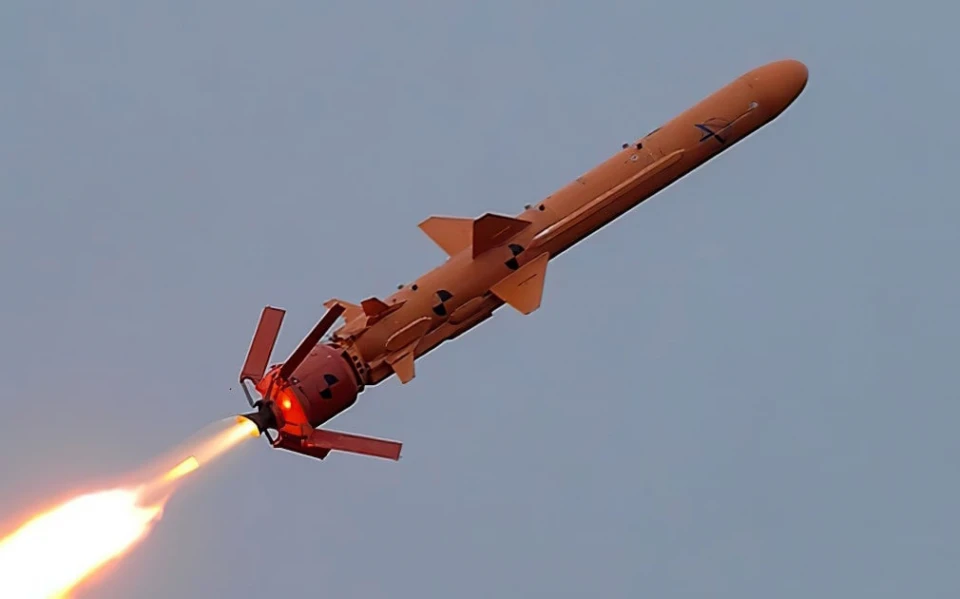Flamingo vs Long Neptune: Ukraine’s latest missile arsenal and what it means for Russia
global.espreso.tv
Tue, 26 Aug 2025 16:13:00 +0300

Oleksandr Kovalenko, a Ukrainian military and political observer with the Information Resistance group, shared his opinion in a joint project between OBOZ.UA and the Information Resistance group.As the author notes, new Ukrainian defense projects are often widely discussed and sometimes criticized — occasionally unfairly. This was the case with systems such as the 2S22 Bohdana and R-360 Neptune. Kovalenko points out that early assessments of the Flamingo missile likened it to outdated weapons like the V-1 and Tu-143, ignoring its unique technical features. After unveiling the Long Neptune, some commentators questioned why Ukraine invests in two seemingly similar subsonic missiles instead of unifying production, but Kovalenko argues that such a perspective overlooks the distinct roles of each system.Features and capabilitiesFlamingo:flight range: 3,000 kilometers;maximum speed: 950 km/h;cruising speed: 850–900 km/h;warhead weight: 1,000–1,150 kilograms;guidance system: combined, including satellite (resistant to electronic warfare) and inertial systems.Kovalenko emphasizes that the Flamingo is, in terms of its technical characteristics, currently the world’s most advanced subsonic cruise missile. “It surpasses not only the Kh-101, Kh-555, 3M14 Kalibr, and 9M728/729 Iskander-K but even the American Tomahawk,” he writes, highlighting its superior target range, warhead weight, and other parameters often overlooked by critics.The author believes that one of Flamingo’s key advantages is its role as a mobilization missile: it can be produced quickly, in large quantities, and relatively cheaply—qualities essential in the context of a dynamic and highly aggressive war of attrition. Kovalenko notes that, to date, no country in the world possesses the technology to produce mobilized subsonic cruise missiles of Flamingo’s caliber. Even Russia, despite years of efforts to replace the energy-intensive Kh-101 and 3M14 Kalibr, as well as the aviation Kh-59/69, has achieved little success in this area.Another notable advantage, Kovalenko stresses, is Flamingo’s land-based launch platform. As a surface-to-surface missile, it is much harder for adversaries to track its launch or monitor the trajectory, increasing its operational effectiveness.Long Neptune:flight range: 1,000 kilometers;speed: 900 km/h;warhead weight: 350–450 kilograms. At first glance, Kovalenko admits, the Long Neptune may seem inferior to Flamingo in terms of range and warhead weight. It is also not a mobilization-type missile, and its production requires significantly more resources. “But that is precisely the point,” he asserts.When the R-360 was created, it was designed not only with the parameters typical of an anti-ship missile, but also with a multifunctional perspective: both in terms of target destruction and the launchers used.Kovalenko explains that the R-360 was designed from the outset as a multifunctional missile: capable of striking both surface and land targets, and adaptable to multiple launch platforms. The author recalls its successful 2023 strike on the Russian S-400 complex at Cape Tarkhankut as proof of its versatility. Moreover, the R-360 was envisioned to be launchable not only from land, but also from sea and air platforms, a feature Kovalenko believes will make it a more flexible threat in the future.ConclusionsFor Independence Day, Ukraine revealed its cards in the standoff with Russia, which continues issuing ultimatums. President Zelenskyy had previously spoken about advancing the missile program, but few expected that alongside the well-known R-360 project, a mobilization-type cruise missile was also being developed.Together, these weapons pose a serious threat to both Russia’s frontline and deep rear, especially given its heavily depleted layered air defenses, which cannot counter significant challenges.
At first glance, Kovalenko admits, the Long Neptune may seem inferior to Flamingo in terms of range and warhead weight. It is also not a mobilization-type missile, and its production requires significantly more resources. “But that is precisely the point,” he asserts.When the R-360 was created, it was designed not only with the parameters typical of an anti-ship missile, but also with a multifunctional perspective: both in terms of target destruction and the launchers used.Kovalenko explains that the R-360 was designed from the outset as a multifunctional missile: capable of striking both surface and land targets, and adaptable to multiple launch platforms. The author recalls its successful 2023 strike on the Russian S-400 complex at Cape Tarkhankut as proof of its versatility. Moreover, the R-360 was envisioned to be launchable not only from land, but also from sea and air platforms, a feature Kovalenko believes will make it a more flexible threat in the future.ConclusionsFor Independence Day, Ukraine revealed its cards in the standoff with Russia, which continues issuing ultimatums. President Zelenskyy had previously spoken about advancing the missile program, but few expected that alongside the well-known R-360 project, a mobilization-type cruise missile was also being developed.Together, these weapons pose a serious threat to both Russia’s frontline and deep rear, especially given its heavily depleted layered air defenses, which cannot counter significant challenges.
 At first glance, Kovalenko admits, the Long Neptune may seem inferior to Flamingo in terms of range and warhead weight. It is also not a mobilization-type missile, and its production requires significantly more resources. “But that is precisely the point,” he asserts.When the R-360 was created, it was designed not only with the parameters typical of an anti-ship missile, but also with a multifunctional perspective: both in terms of target destruction and the launchers used.Kovalenko explains that the R-360 was designed from the outset as a multifunctional missile: capable of striking both surface and land targets, and adaptable to multiple launch platforms. The author recalls its successful 2023 strike on the Russian S-400 complex at Cape Tarkhankut as proof of its versatility. Moreover, the R-360 was envisioned to be launchable not only from land, but also from sea and air platforms, a feature Kovalenko believes will make it a more flexible threat in the future.ConclusionsFor Independence Day, Ukraine revealed its cards in the standoff with Russia, which continues issuing ultimatums. President Zelenskyy had previously spoken about advancing the missile program, but few expected that alongside the well-known R-360 project, a mobilization-type cruise missile was also being developed.Together, these weapons pose a serious threat to both Russia’s frontline and deep rear, especially given its heavily depleted layered air defenses, which cannot counter significant challenges.
At first glance, Kovalenko admits, the Long Neptune may seem inferior to Flamingo in terms of range and warhead weight. It is also not a mobilization-type missile, and its production requires significantly more resources. “But that is precisely the point,” he asserts.When the R-360 was created, it was designed not only with the parameters typical of an anti-ship missile, but also with a multifunctional perspective: both in terms of target destruction and the launchers used.Kovalenko explains that the R-360 was designed from the outset as a multifunctional missile: capable of striking both surface and land targets, and adaptable to multiple launch platforms. The author recalls its successful 2023 strike on the Russian S-400 complex at Cape Tarkhankut as proof of its versatility. Moreover, the R-360 was envisioned to be launchable not only from land, but also from sea and air platforms, a feature Kovalenko believes will make it a more flexible threat in the future.ConclusionsFor Independence Day, Ukraine revealed its cards in the standoff with Russia, which continues issuing ultimatums. President Zelenskyy had previously spoken about advancing the missile program, but few expected that alongside the well-known R-360 project, a mobilization-type cruise missile was also being developed.Together, these weapons pose a serious threat to both Russia’s frontline and deep rear, especially given its heavily depleted layered air defenses, which cannot counter significant challenges.







